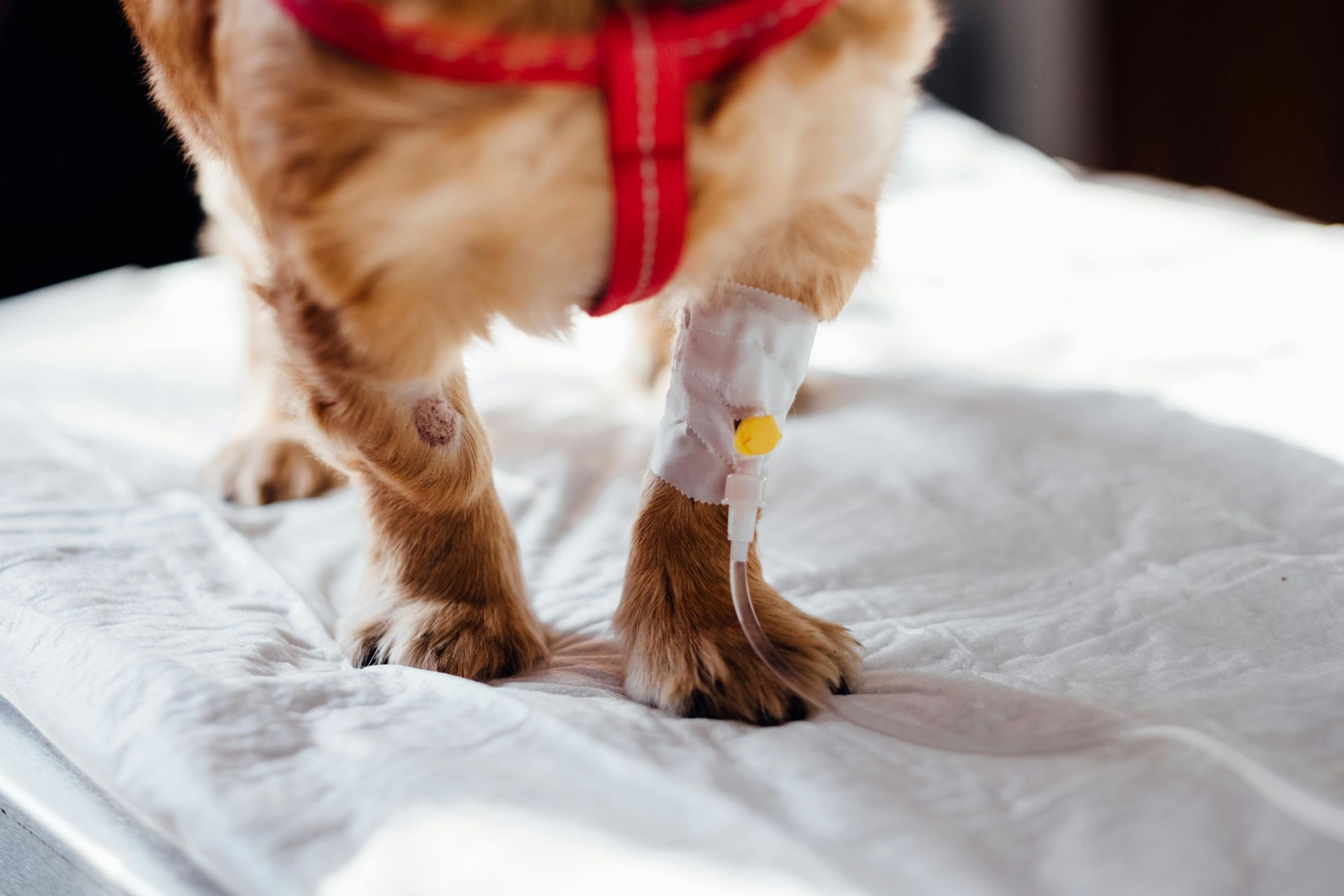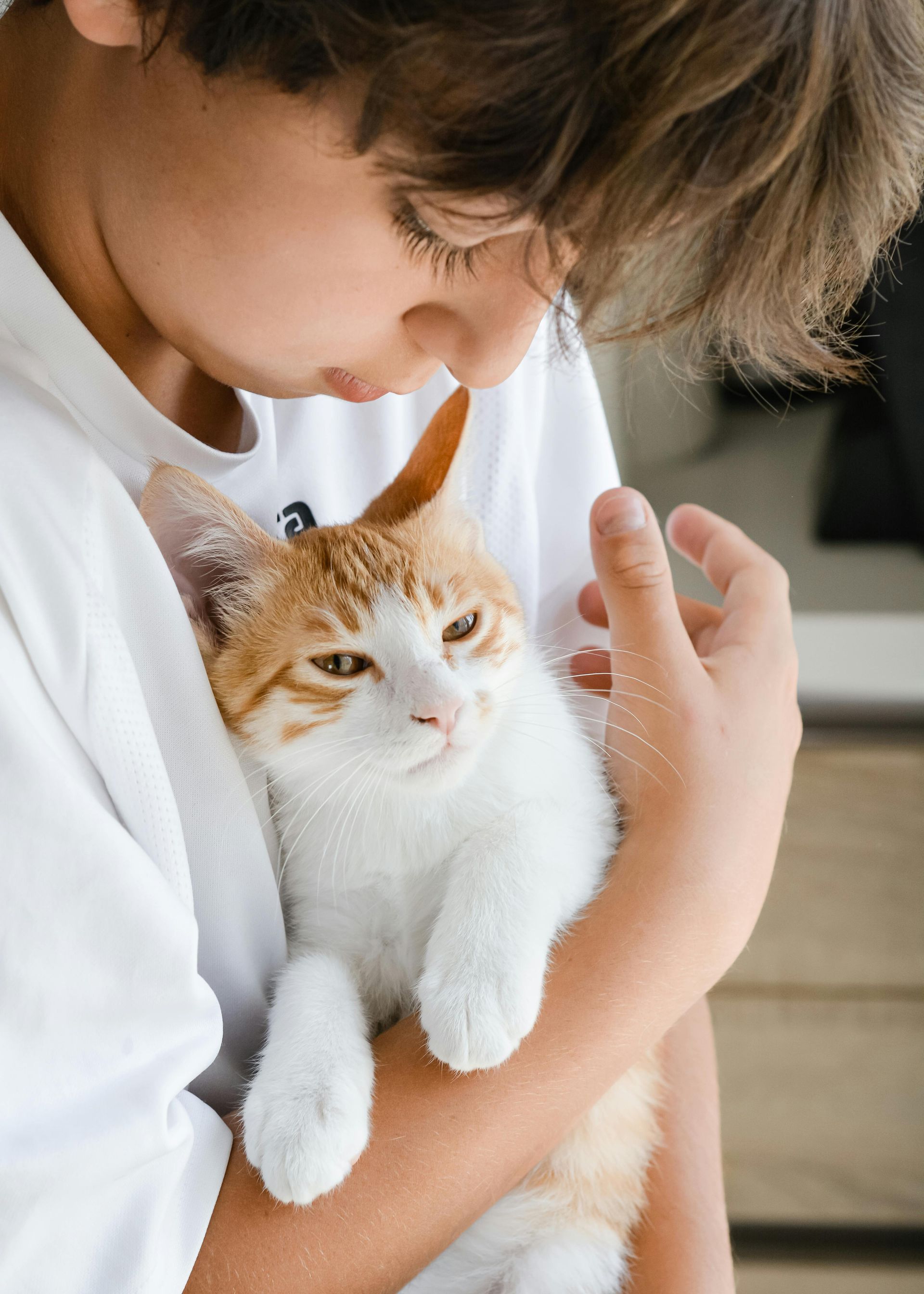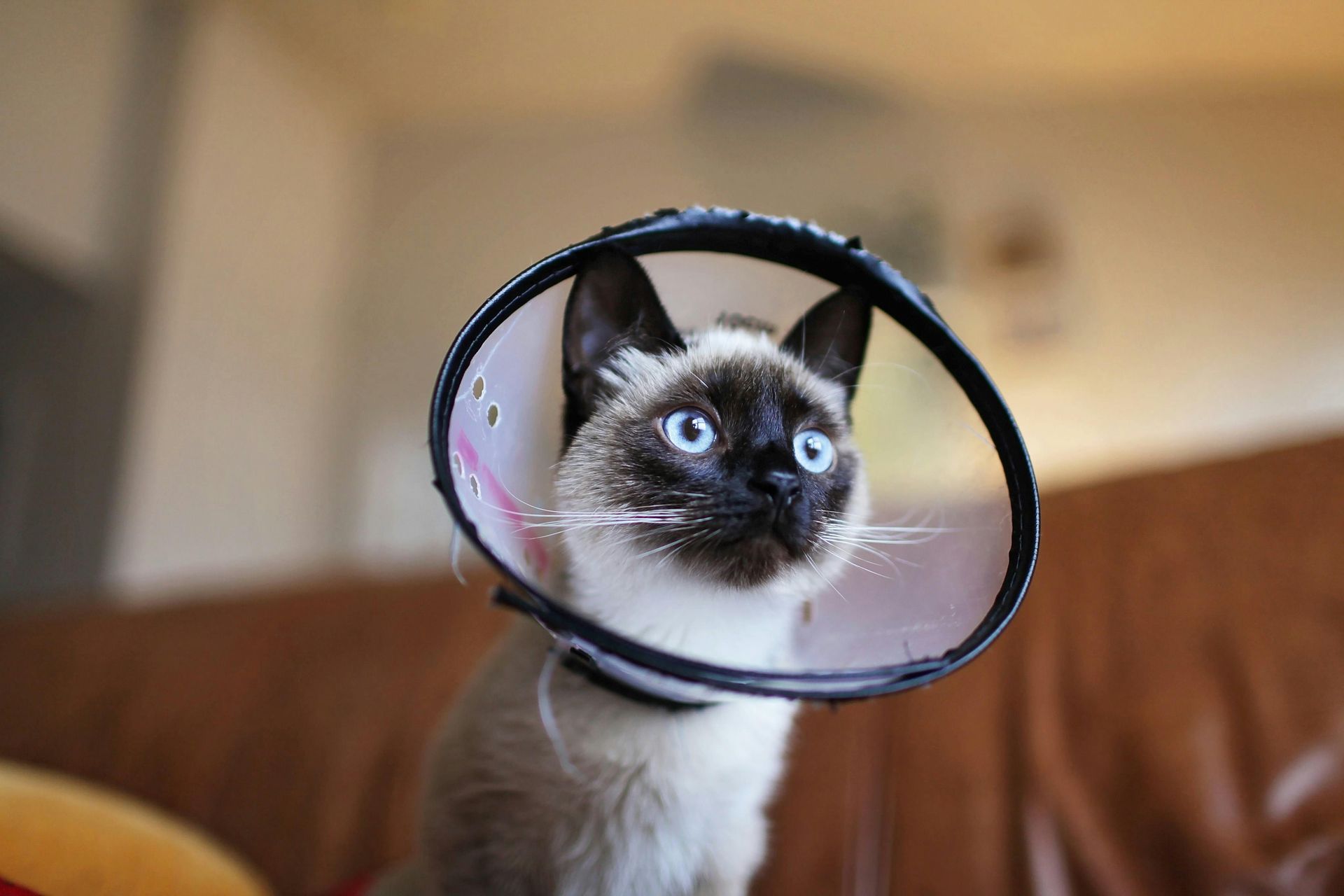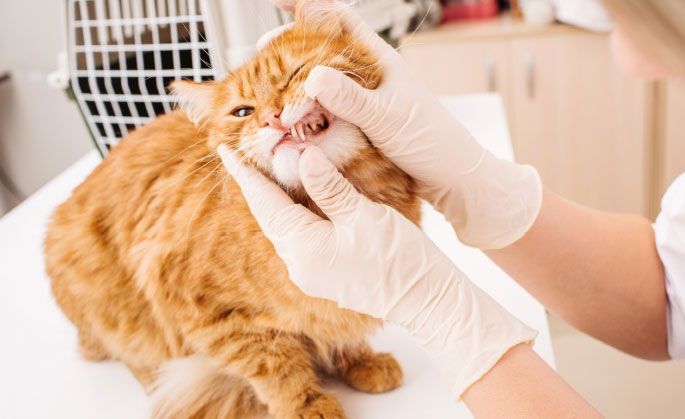Lets Talk Teeth !!!
You are probably over us vets banging on about your pet’s teeth. Every time they visit the vet we are checking their teeth, and even offer FREE pet dental checks at any time.
Why?
Because your pet can’t talk!
And their teeth are something they need to use every day, every time they eat. Imagine if we just waited till their dental disease became so painful that they stopped eating. Imagine yourself having toothache so bad that you couldn’t eat at all. This would be after you had been eating on one side of your mouth for some time, until it also became too painful to chew on.
We get so many reports of a complete change in pet behaviour, to a much happier and active pet after having their teeth cleaned, and problem teeth extracted. It becomes clear that the pet must have been experiencing such a dull aching persistent pain that it was completely affecting their behaviour and quality of life.
We HATE extracting teeth. We really do. We avoid it wherever we can, however we LOVE making a difference in your pet’s life, so much so that when they come back for their recheck you have noticed such a change in their behaviour you can’t thank us enough.
And that is what we are here for, to be an advocate for your pet, as they can’t tell you when they have a sore mouth. They can just hope that we are able to pick up on it and treat it before it becomes unbearable.
Pets are tough and will carry on coping as best they can when they are in pain. They don’t show obvious signs of dental pain that you can easily notice. This is part of their evolutionary behaviour, with instinct to not show other animals when they may be vulnerable.
So what is dental disease?
- Like humans, dental disease in pets is caused by plaque forming on teeth.
- The first signs are inflammation and infection of the gums.
- The plaque hardens and sticks to the teeth. This forms what is known as Tartar which allows bacteria to form and work its way under the gumline. This causes inflammation known as Gingivitis.
- Infection occurs and will begin to attack and destroy the supportive tissues of the teeth (including the gums, ligaments and even bone).
- The worst outcomes are tooth loss, pain and possible abscesses.
Why do we check your pet’s teeth at every visit?
- Dental disease is the most commonly diagnosed medical problem in cats and dogs.
- 80% of dogs and cats over the age of 2 years of age will be diagnosed with some form of dental disease.
- If diagnosed and treated early, dental disease is reversible! (Saving your pet from unnecessary pain and saving you money!)
- Left untreated, dental disease will get worse over time. Irreversible damage results in pain and tooth loss and impacts your pet’s quality of life.
But my pet seems happy and healthy...?
Dental disease is painful.
- It is likely that your dog or cat will not show obvious signs of being in pain.
- If we have a sore tooth, we still need to eat but we often avoid chewing on the painful side. Your pet may be doing the same without you knowing! They adapt to the pain and act normally.
- In extreme cases pets will stop eating or reduce the amount they are eating because the pain becomes too much. We do not wish for your pet to reach this point!
- Dental disease isn't just bad breath and rotten teeth. The bacteria associated with dental disease can also enter your pet’s bloodstream. This can infect other organs, such as their heart, liver and kidneys.
Do we need to treat it now...?
- Early diagnosis and treatment are best for your pet’s health and wellbeing.
- Early stages of dental disease (Grade 1 & 2) are REVERSIBLE.
- Left untreated, dental disease WILL only get worse.
- If your pet has more severe dental disease, you risk of damage to other organs the longer it is left untreated.
I’m worried. Isn’t a general anaesthetic risky?
- All anaesthetics have some risk, but we do many things to ensure that these risks are minimised. This includes:
- All anaesthetics are fully monitored with a whole range of specialised equipment (exactly the same as you would find in a human hospital)
- All patients have a dedicated surgical nurse. They are responsible for monitoring the anaesthetic as well as staying with their patient right through recovery
- Our preanesthetic blood tests mean we can pick up things that we cannot see just by physically examining of patient
- Also remember, the longer you leave dental disease, the worse it gets and the higher the anaesthetic risk.
Didn't my pet just have dental treatment...?
- Just like humans, plaque and tartar start to form on your pet’s teeth in as little as 24 hours after treatment. This is the process of dental disease starting all over again.
- Having dental treatment once doesn't mean that your pet will never need it again. Some breeds of dogs and cats are more prone to dental disease than others.
- As humans we reduce dental disease by brushing our teeth at least twice daily. Our pets rarely enjoy or allow this level of care!
- Daily homecare can play a significant part in reducing dental disease.
- We give you specific advice for your pet to help control plaque build-up and prolong the need for dental treatment.
How serious is my pet's Dental Disease?
Dental disease is graded on a scale 1 to 4.
Grade 1 - Minor
Early stage dental disease which, with treatment, can be reversed.
Soft plaque has built up on the surface of the teeth. A small amount of tartar is also present. This early stage is characterized by gingivitis, which is inflammation of the gums in response to the presence of tartar and bacteria. You may observe some swelling of the gums. A thin red line on the gums next to the teeth may also be visible during this stage.
Dog
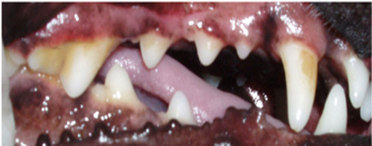
Cat
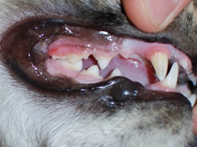
Person
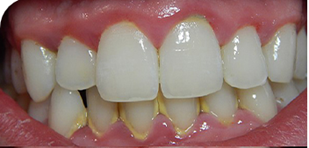
How is it treated?
- Scale and polish procedure.
- No extractions needed.
- Recovery is shorter and generally uncomplicated with almost no pain or discomfort.
Grade 2 - Moderate
Early stage dental disease, where MOST of the damage is reversible.
Moderate tartar buildup is present. It has acted as a wedge, pushing the gums away from the teeth, causing food, bacteria, and debris to accumulate there. The gums are red, swollen, and painful and bleed when touched. This is early periodontitis, where there is a small amount of bone loss – less than 25% - visible on oral radiographs. You may notice inflammation of your pet’s gums, bad breath, and visible plaque and tartar. At this stage, proper dental care is crucial to reverse the progress of dental disease.
Dog
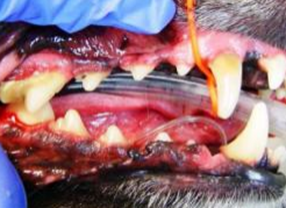
Cat
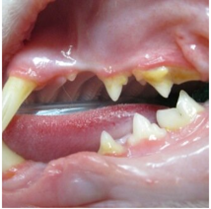
Person
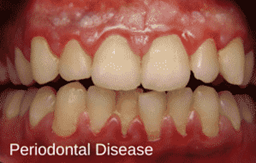
How Is It Treated?
- Slightly longer scale and polish as more teeth affected.
- No extractions needed.
- Recovery is reasonably short and uncomplicated with little discomfort.
Grade 3 - Major
Grade 3 is a significant level of dental disease, with irreversible damage.
Plaque and tartar formation is heavy. Pockets of bacteria and debris have accumulated to form loss of gum attachment to the tooth and further pockets of infection along the teeth (periodontal pockets). The infection has destroyed tissues around the teeth that hold them in place, and some have become loose. This is moderate periodontitis, when 25-50% bone loss is visible on oral radiographs. Gums will be swollen and irritated, and probably bleed easily. Your pet will experience bad breath and significant pain and need to have infected and/or damaged teeth removed.
Dog
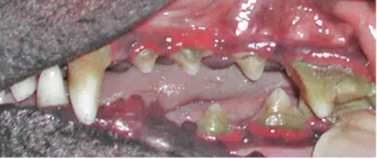
Cat

Person
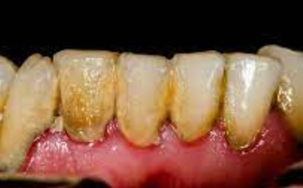
How is it treated?
- A longer procedure with likely tooth extractions.
- Recovery is longer, with food restrictions, pain relief and antibiotics.
Grade 4 - Severe
Grade 4 is a severe level of dental disease, where damage is irreversible AND must be treated urgently. It’s making your pet sick.
Severe tartar formation and gum disease is present. Toxic debris and inflammation have caused extensive tissue death. Roots are infected, abscessed, and rotten. The thin wall of bone surrounding teeth has deteriorated, where bone loss of 50% or higher is visible on oral radiographs, and many teeth are loose. Your pet is not only in severe pain, but also at risk of losing multiple teeth, as well as systemic infection and damage to internal organs, due to bacteria from the mouth entering the bloodstream and spreading throughout the body. Pain can also be severe at this stage.
Dog

Cat
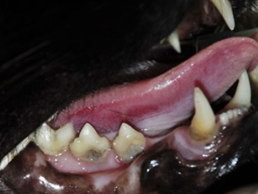
Person
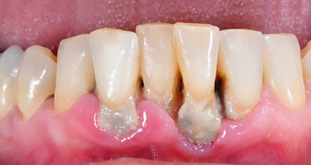
How is it treated?
- Long procedure
- Tooth extraction necessary (sometimes all the teeth)
- Recovery is much longer, with food restrictions, stronger pain relief and antibiotics required.
Why is there a difference in price between the different grades?
The main reason for price differences comes down to the length of the procedure.
- More advanced dental disease means more complexity and longer procedures for your pet.
- For example: Grade 3 and 4 dental procedures involve:
- Extra instruments
- Extracting teeth
- Longer anaesthetic times
- Local anaesthetic nerve blocks
- Antibiotics
- Anti-inflammatories
- Strong pain relief
- Material and instruments to stitch the gums.
Why can't you tell me exactly what all this will cost?
- Your dental procedure estimate may have a price range if your pet has been diagnosed between grades, e.g. Grade 2-3 dental disease. The extent of dental disease will not be clear until a full examination is done under general anaesthetic.
- Most pets don’t respond to “open WIDE and keep it open 😉”
- The Vet may find "suspect teeth". These may need removal. A decision can only be made following the completion of dental radiographs that show what is happening below the gum line.
- Your pet has been diagnosed with Grade 3 or 4 dental disease. The variation will be to accommodate for the number of possible extractions. The total cost of the procedure will only be known when the procedure has finished.

